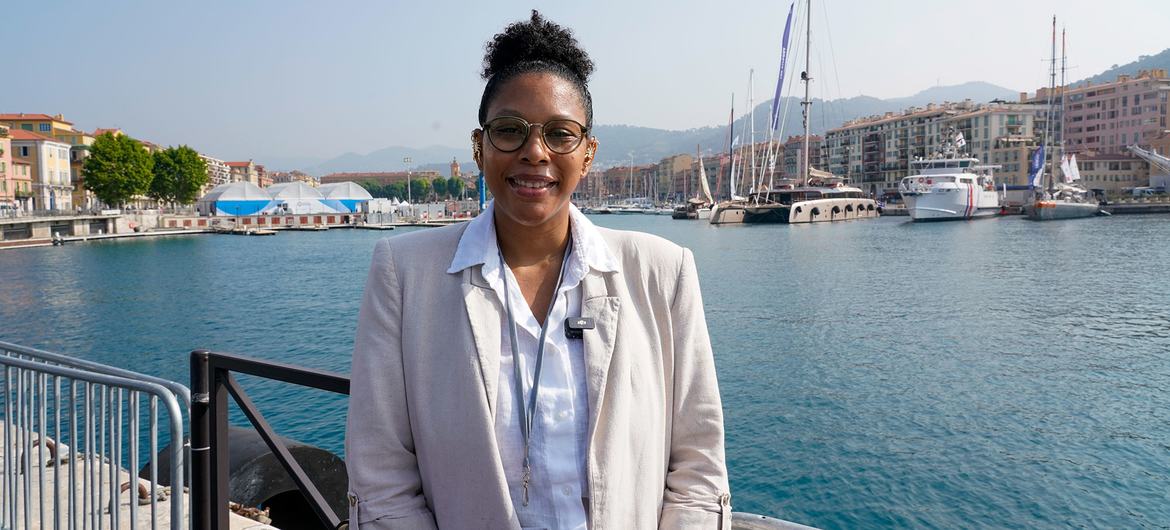Nice, France – June 12, 2025
As the Third UN Ocean Conference unfolded on the sun-soaked Mediterranean coast, a quieter but critical dialogue took place behind closed doors in Nice. Over 40 environment ministers from around the globe gathered to advance negotiations on a potentially landmark treaty to end plastic pollution — a global crisis now visible in every ecosystem and even within the human body.
The meeting, hosted by UN Environment Programme (UNEP) chief Inger Andersen, revealed growing momentum to finalize the world’s first legally binding treaty addressing plastic across its entire life cycle, from production to waste.
“We are choking on plastic,” said Jyoti Mathur-Filipp, the UN’s chief negotiator for the treaty process. “If we don’t act now, no ecosystem — land or sea — will remain untouched.”

UN News/Heyi Zou H.E. Safiya Sawney, Special Envoy and Ambassador for Climate, Government of Grenada.
Treaty in Sight: Final Talks Set for Geneva in August
The treaty’s development has moved at an unusually fast pace by UN standards. Since the 2022 mandate from the UN Environment Assembly, the Intergovernmental Negotiating Committee (INC) has convened five times, drafting a 22-page text that outlines its structure and legal components.
The final round of negotiations is scheduled for August 5–14 in Geneva, where delegates aim to wrap up the agreement ahead of a global diplomatic conference expected in late 2025 or early 2026.
“Countries are now negotiating article by article. We have a real treaty in the making,” Mathur-Filipp said.
What’s in the Treaty?
The draft treaty includes both mandatory and voluntary measures, making it adaptable to different national capacities. It proposes:
- Rules to reduce plastic production.
- Stronger waste management systems.
- Global coordination on microplastics and marine pollution.
- Implementation and compliance mechanisms.
Crucially, it recognizes the disproportionate impact on small island developing states, which often suffer the worst pollution despite contributing the least to the problem.
Why It Matters
According to UN data, without intervention, up to 37 million metric tons of plastic waste could enter the ocean annually by 2040. The economic damage from plastic-related harm could reach $281 trillion over the next two decades, harming tourism, fisheries, and coastal infrastructure.
“It’s costing us the economy, the environment, and our health,” said Mathur-Filipp.
The Road Ahead
The treaty’s success will hinge not just on its final text, but on whether it is ratified and enforced globally. This August’s meeting in Geneva is seen as a make-or-break moment.
“We’re running out of time,” said Mathur-Filipp. “But I believe the political will is finally catching up with the science.”
With the clock ticking and environmental costs mounting, the world is watching to see whether nations can come together — not just in words, but in legally binding action — to halt the plastic tide.




